The global fashion market is projected to reach $880.91 billion in 2025. With so much potential, it’s no surprise that more and more entrepreneurs are wondering how to start a clothing brand.
However, starting a clothing brand can be daunting. It’s not just about coming up with great designs, it’s about knowing your market, building a strong brand, and getting your products into the hands of your customers. As 67% of millennials and 55% of Gen Z consumers say they’re more likely to support brands with a unique identity, you could be the one to build that brand from the ground up.
In this guide, we’ll walk you through every step of how to start your own clothing brand, so that you can turn your vision into a successful business. Let’s dive right in!
How to Start a Clothing Brand: Step-by-Step Guide
Here are 12 steps involved in starting your own clothing brand:
Step 1: Know what you’re getting into
Learning how to start a clothing brand sounds exciting, but it’s not all fabric swatches and Instagram-worthy moments.
Most people imagine they’ll be sketching cute designs, picking out fabric, and watching the orders roll in. But before you sew your first tag, you need to know something important, starting a brand means becoming a business owner first and a creative second. That may not sound glamorous, but it’s the truth that separates dreamers from doers.
You’re not just a designer, you’re everything
When you start out, you are the designer, sure. But you’re also the accountant, the customer service rep, the social media manager, the web developer, the packing-and-shipping crew, and the CEO. If you don’t know how to do all those jobs, get ready to learn fast, or burn out even faster.
There will be days when you’re learning how to fix your website instead of designing clothes. Nights when you’re answering customer emails instead of sketching your next drop. And weekends? They’re probably going to be workdays too, especially in the first couple of years.
Ask yourself: Do I really want to run a business?
This is the biggest question to answer before you dive in. Because running a business is not the same as making clothes. It means taking risks, making hard decisions, and dealing with constant uncertainty, especially in the early days when the money hasn’t started flowing in yet.
Still unsure? Find someone who’s done it. Talk to a business owner (any industry works). Ask them what it’s really like. If you’re lucky, one might mentor you. If you can shadow them for 6 months to a year and feel confident you could do their job if they disappeared tomorrow, then you’re closer to ready than most.

Step 2: Discover your niche and audience
You can’t build a brand for “everyone.” That’s one of the fastest ways to get ignored. Great brands are specific. They speak clearly to a certain group of people and solve a specific style need, cultural vibe, or identity gap.
So before you design a single hoodie or tee on how to start a clothing brand, you need to answer: Who is this for? And what makes your brand different?
How to find a market gap
Finding a niche doesn’t mean being weird or ultra-niche just for the sake of it. It means identifying a space in the market where people are underserved, and then showing up for them.
Here’s how to start:
- Study what’s already out there. Look at Instagram brands, Etsy shops, and TikTok fashion creators. What styles dominate? What’s missing?
- Look for underserved communities. Maybe it’s stylish streetwear for plus-size women, or anime-inspired clothing for adults, or minimalist menswear for tall guys, the opportunities are endless.
- Spot frustrations. Hang out in Reddit threads, TikTok comments, or Amazon reviews. Cross-pollinate ideas. Sometimes your niche comes from blending two passions, like athletic wear + sustainable fabrics, or gothic fashion + pastel colors.
If you can clearly answer, “This brand exists to serve [X] kind of person who struggles to find [Y] in fashion,” then you’ve found your gap.
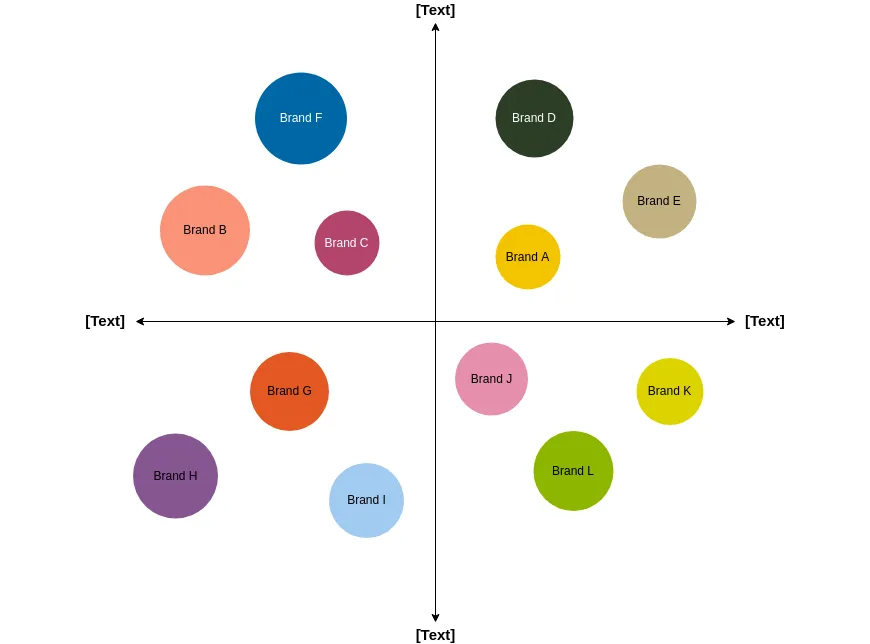
Build your target customer persona
Once you’ve found a gap, it’s time to imagine your ideal customer like a real human. This isn’t just a creative exercise, it helps you decide what to design, where to market, and how to talk to your audience.
Here’s what to define:
- Name and age: Give them a name (even if it’s made up). How old are they? Are they in school, working, or freelancing?
- Style and interests: What’s their fashion vibe? What music do they love? What TikToks do they watch?
- Lifestyle and values: Are they eco-conscious? Do they go out a lot? Are they parents? Are they deeply into niche subcultures?
- Problems and desires: What frustrates them about fashion? What are they really looking for in a brand?
Example: My ideal customer is Jordan, a 22-year-old college student into indie music, vintage streetwear, and sustainability. They love self-expression, hate fast fashion, and want affordable pieces that feel one-of-a-kind.
Once you define Jordan (or whoever your person is), every decision becomes easier. You’re no longer designing for the masses, you’re creating for someone real.
Step 3: Develop your fashion skills and taste
Now that you know who you’re designing for and what makes your brand different, it’s time to get to the fun part in learning how to start a clothing brand, developing your creative muscle. This is where your vision starts to take shape.
If you’ve never picked up a pencil or a sewing needle, that’s totally fine. Everyone starts somewhere. What matters is that you’re willing to learn.
Here’s what you can start doing today:
- Learn to sketch simple designs. You don’t need to be Picasso. Focus on basic outlines of tees, hoodies, pants, etc. Use tools like Adobe Fresco, Procreate, or even pen and paper.
- Study real clothing construction. Look at how seams, collars, and stitching are done on actual garments. Watch YouTube breakdowns of how different styles are made.
- Play with fabric. Visit thrift stores or fabric shops. Learn how different materials feel, drape, stretch, and wear over time.
- Follow other designers. Not to copy them, but to train your eye. Ask yourself: What do I like about this piece? What story is it telling?
There’s no one right way to learn fashion, it depends on your goals and resources.
- Self-taught: Great for creative freedom. Use free tools like YouTube, Skillshare, Coursera, or books like Fashionpedia. Follow creators on TikTok or Instagram who show their design process.
- Fashion school or courses: If you want a deeper foundation (especially in technical design or textiles), consider taking classes online or at a local school.
- Hands-on practice: Learn to sew, even if it’s just basics. Try repurposing old clothes. It gives you a feel for fit and proportions, even if you’ll eventually outsource production.
The more you practice, the more your style will emerge. And that’s the goal, not just being good at design, but knowing what kind of design feels like you.
Step 4: Study the industry and follow trends
Fashion moves fast. What’s hot one season can feel stale the next, and your audience will feel it if you’re not in sync.
Here’s where real designers do trend research:
- TikTok & Instagram Reels: Look at what influencers are wearing. Pay attention to hashtags like #fashiontok, #outfitoftheday, #corecore.
- Pinterest trends tool: Shows what fashion aesthetics are rising in popularity (great for Gen Z and millennial insights).
- Retailer sites: Browse the “New Arrivals” section of brands like ASOS, Urban Outfitters, Zara, and SSENSE.
- Reddit threads: Subreddits like r/femalefashionadvice, r/malefashionadvice, and r/frugalmalefashion are goldmines.
- Google trends: Search fashion terms and compare interest over time.
Also, here are some current trends making waves in 2025 that you can watch, or use to position yourself against:
- Digital and AI-influenced fashion: Digital prints and AI-assisted designs are on the rise. Over 30% of Gen Z shoppers say they’re interested in buying AI-created designs.
- Slow fashion and sustainability: Consumers are more mindful. A McKinsey report shows 67% of shoppers under 30 say sustainability influences their purchase decisions. Aso. they expect interest in recycled fabrics, low-waste production, and small-batch drops.
- Hyper-personal expression: Style tribes are back like Gorpcore, Coquette, Cybercore, Old Money Aesthetic, and Weird Girl Energy. People want fashion that reflects identity, not just trends.
- Gender gluid and adaptive fashion: Inclusive sizing, unisex designs, and adaptive clothing (for neurodiverse or disabled wearers) are gaining traction, not as a niche, but a standard.
- 90s, Y2K, and quiet luxury: Minimalist fits, wide-leg trousers, vintage sneakers, and crop tops are here to stay. What’s more, “old money” looks and sleek neutrals continue dominating both streetwear and formalwear.

Remember that understanding trends doesn’t mean copying them, it means using them as inspiration while staying true to your brand voice.
Step 5: Choose a business model that fits you
When it comes to discovering how to start a clothing brand, choosing the right business model is crucial. It impacts everything from production to profit margins.
Here’s a comparison of four popular business models in fashion to help you decide which one suits your goals and resources.
Business model | Description | Pros | Cons | Best for |
In-house production | You design and produce the clothing yourself. This includes full control over quality, production, and inventory. | - Full control over quality and production - Higher profit margins - Creative satisfaction | - High upfront costs - Time-consuming - Inventory risks | Brands with a strong creative vision and capital to invest |
Partnering with manufacturers | You collaborate with third-party manufacturers to produce your designs, usually lowering upfront costs. | - Lower upfront costs - Less management - Scalability | - Less control over quality and speed - Requires trust in suppliers | Brands looking to scale without handling production directly |
Print-on-demand (POD) | Third-party companies print and ship designs only when orders are placed. No inventory needed. | - Low startup costs - No inventory risk - Easy to scale | - Lower profit margins - Limited control over product quality and shipping speed | New brands with limited investment or testing new ideas |
Dropshipping | You partner with suppliers who handle both production and shipping directly to the customer. | - No inventory or fulfillment hassle - Low risk | - Low profit margins per unit - Limited control over product quality and shipping | Brands wanting minimal hands-on involvement and fast scaling |
Choosing the right business model depends on your goals, resources, and risk tolerance when looking for how to start a clothing brand. You should ask yourself:
- How much control do I want over the production process?
In-house production offers complete control but comes with more time and effort. Partnering with manufacturers gives you control over the design but not production logistics. POD and dropshipping limit your control but simplify the process.
- What is my initial budget and risk tolerance?
In-house production requires a higher upfront investment in equipment and inventory. Partnering with manufacturers is more budget-friendly but may still require some upfront costs. POD and dropshipping are ideal for low-risk, low-investment options, with minimal upfront costs.
- How involved do I want to be in fulfillment and logistics?
In-house production means you’re responsible for everything, including fulfillment and shipping. Partnering with manufacturers means you handle design and marketing, while they take care of production. POD and dropshipping remove you from fulfillment entirely, which might be ideal if you prefer focusing on design and marketing.
- How quickly do I want to scale?
POD and dropshipping allow for fast scaling, as you don’t need to worry about inventory or production capacity. Partnering with manufacturers gives you more control over scaling, but you’ll need to manage production capacity and logistics. In-house production can scale more slowly but with complete quality control.
- What is my long-term vision for the brand?
If your long-term goal is to create a unique, high-quality brand with complete creative control, in-house production might be best. If you’re looking to scale quickly and test multiple designs, POD and dropshipping offer flexibility with less commitment. If you plan to eventually scale up while keeping control over quality, partnering with manufacturers is a good middle ground.
Step 6: Create a lean business plan
A lean business plan is a simple, one-page roadmap that helps you focus on the essentials when looking for how to start a clothing brand. It’s about getting clear on what matters.
What to include in a lean business plan:
- Define your business: Write a short description of your brand. Focus on what makes you unique and your value proposition.
- Choose your problem and solution: Identify the problem you solve for your customers, and how your brand or product is the solution.
- Define your target market and competition: Who are your ideal customers? Who are your competitors? List key attributes of your audience and competitors.
- Determine how you’ll market your business: Outline the sales channels (Shopify, Instagram, etc.) and marketing strategies (social media, influencer partnerships) you’ll use.
- Evaluate your finances: Identify your key revenue streams (direct sales, collaborations) and expenses (materials, marketing).
- Establish milestones for success: Set concrete milestones (e.g., launching your website or securing your first sale) with deadlines.
- Determine the resources you need: List partners, suppliers, or employees you’ll need to make your business a success.
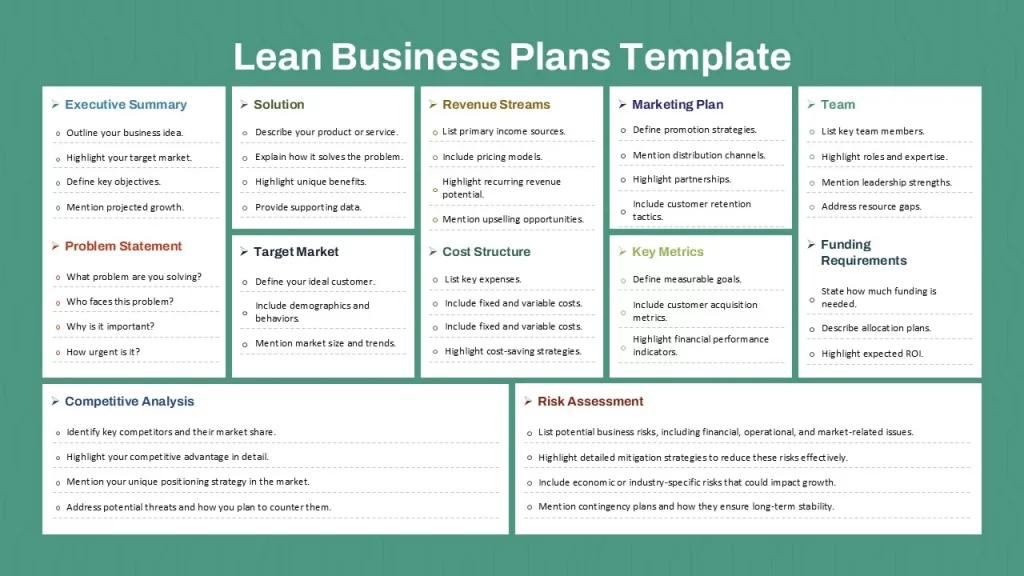
The beauty of a lean business plan is its simplicity. Instead of getting bogged down in extensive details, you focus on what really matters: how your brand stands out, what problem it solves, and how you’ll bring it to life. It’s a tool that evolves as your business grows, and it keeps you aligned with your vision and goals.
With this plan in hand, you’re ready to take action and bring your clothing brand to life.
Step 7: Build your brand identity
Brand identity is the physical and digital result of your branding. It’s a collection of elements that come together to create a unique and consistent image of your brand. These elements are what will visually represent your company to your audience and will distinguish you from the competition.
- Brand name: Choose something memorable and aligned with your values.
- Logo: The visual symbol that represents your brand, simple and scalable.
- Tagline: A short, catchy phrase that communicates your brand’s message.
- Typography: Fonts that reflect your brand’s personality, bold, elegant, fun, etc.
- Color palette: Colors that evoke the right emotions and resonate with your audience.
- Mascot: Optional, but a fun way to add personality.
- Jingles: Catchy music or slogans that stick with people.
Take Gucci as an example. Gucci’s brand identity is built around luxury and sophistication. Their interlocking G logo and the Granjon Roman font communicate high-end style. Their red and green color palette and classic yet bold design make them instantly recognizable.
A strong brand identity helps you:
- Stand out in a crowded market.
- Build trust with customers.
- Create recognition and loyalty over time.
With your brand identity in place, you’re ready to start creating your first collection, keeping your identity consistent across all products and marketing materials.
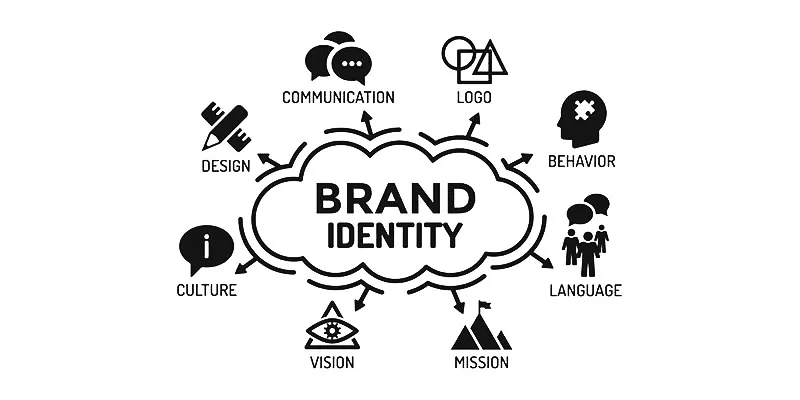
Step 8: Start designing and testing products
Now, it’s time to start designing your products on how to start a clothing brand. At first, keep it simple. You don’t need to design a full line of 20+ pieces. Instead, focus on 3 to 4 core designs that you can really test. These should represent your brand’s aesthetic and mission but don’t overwhelm yourself with too much variation early on.
Consider starting with the essentials:
- T-shirts or hoodies for a casual, versatile base
- Accessories like bags, hats, or scarves to complement your main products
- One or two unique statement pieces that reflect your brand’s identity
Create mockups and prototypes
Before you jump into production, create mockups or prototypes of your designs. These are essentially rough drafts that allow you to see how your designs translate into real products.
- Use design software like Adobe Illustrator or free tools like Canva and Procreate to sketch digital versions of your ideas.
- Order physical samples if you’re ready to test the actual product. You can use services like Printful, Teespring, or local manufacturers to create one or a few pieces at a time.
Test with real people
Now, this is where it gets interesting: feedback. You can’t design in a bubble. Real people, especially your target audience, need to weigh in on whether your designs work.
Here’s how to test your designs:
- Get samples made and share them with a small group of friends, family, or influencers who fit your target market.
- Set up a pre-order or “limited launch” to see if people are actually willing to buy. This gives you real data on how your audience feels about your designs.
The goal is to validate your designs with real customer insights before investing too much in production.
Make adjustments based on feedback
After receiving feedback, don’t be afraid to adjust. Maybe the design needs a small tweak, or perhaps a different color would work better. Testing is about learning from your customers and improving.
It’s better to go through several iterations early on than launch with designs that don’t resonate with your market.
Step 9: Find a production & fulfillment partner
You’ve designed your products, received feedback, and are ready to move forward with bringing them to life on a larger scale.
If you’re not planning to produce your clothing in-house, you’ll need to find a reliable manufacturer. This partner will bring your designs to life, so it’s essential to find someone you trust.
You can search for manufacturers on:
- Directories and platforms: Websites like Maker’s Row, ThomasNet, Alibaba, and Global Sources offer databases of manufacturers.
- Trade shows: Events like the Magic Show in Las Vegas or Texworld USA are great places to meet manufacturers in person.
- Referrals: If you’re already working with other designers or entrepreneurs, ask for recommendations.
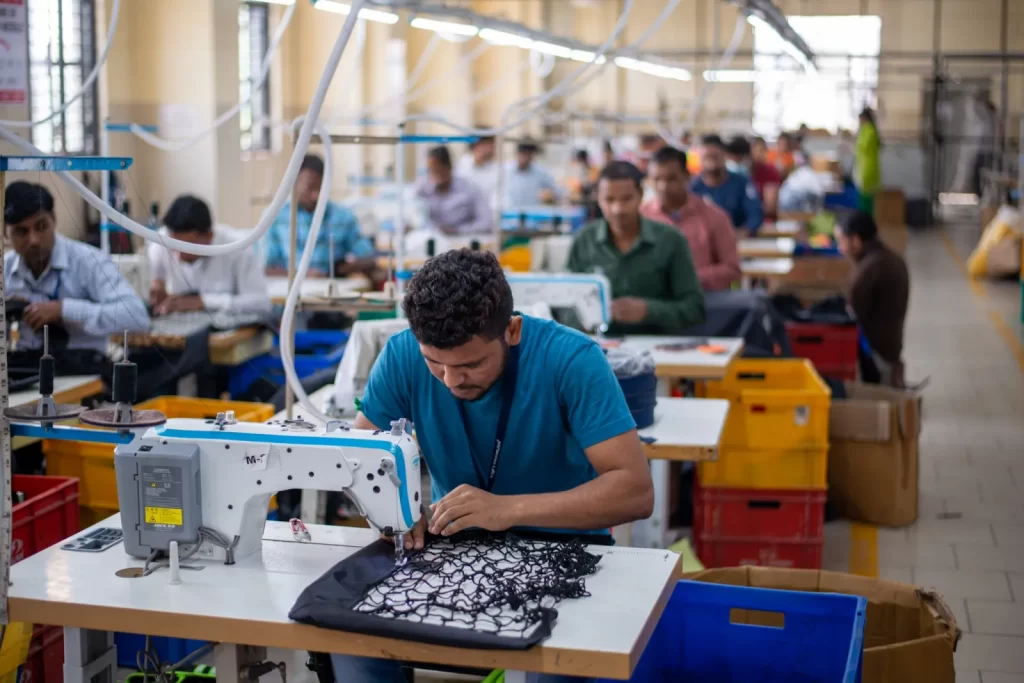
Once you have a list of potential manufacturers, start reaching out and asking questions. Some key things to cover:
- Production timeline: How long will it take to produce your first order? Can they meet your deadlines?
- Quality control: What quality checks are in place? Can you request sample runs before committing?
- Minimum order quantities (MOQs): Are their MOQs aligned with your current needs? (Be careful, some manufacturers have very high MOQs that may not work for small businesses.)
- Pricing: Get detailed pricing for small and large quantities. Does the price match your profit margin goals?
- Communication: How responsive are they? Do they speak your language (both literally and figuratively)?
Before committing to large orders, always order samples. This gives you a chance to check the fabric, the fit, the stitching, and overall quality. It’s also a good opportunity to check their shipping times and reliability.
What about fulfillment partners?
Fulfillment partners are companies that handle the storage, packaging, and shipping of your products. Choosing the right fulfillment partner can save you time, stress, and money.
How to find the right fulfillment partner:
- Fulfillment networks: Some popular fulfillment services include ShipBob, ShipStation, and Fulfillment by Amazon (FBA).
- Warehouse or drop-shipping: Depending on whether you want to store inventory or use a dropshipping model, look for partners that align with your needs.
- Integrations: Make sure your fulfillment partner integrates easily with your chosen sales platforms
The fulfillment partner is also part of your brand experience. If they deliver late or provide poor packaging, it reflects poorly on your brand. Look for companies with great customer service and a reputation for meeting deadlines.
Step 10: Price for profit (and survival)
When you’re just starting out on how to make a clothing brand, it’s not unusual to price lower than you might want to in order to get your foot in the door. This low-cost strategy is a powerful way to penetrate the market, attract attention, and build brand awareness. The idea is to capture a significant number of customers who will come for the value but hopefully return for the quality and your brand’s story.
Here are some things to keep in mind:
- Don’t sacrifice quality: Even with low prices, your product must still meet the expectations of your customers. The goal is to win them over with great designs, solid craftsmanship, and customer service.
- Be clear about the reason for the low price: If you’re offering a discount to build your brand, let your customers know. They’ll appreciate the honesty and understand it’s a temporary strategy.
- Focus on value, not just price: Your lower price should come with perceived value, whether that’s a great customer experience, unique designs, or an element of personalization.
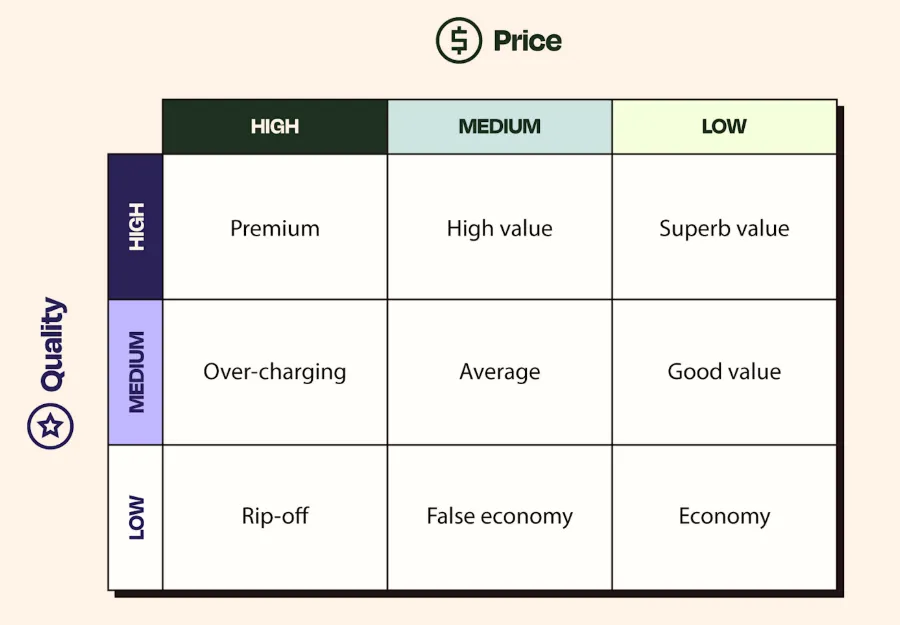
While low pricing may help you enter the market, it’s not sustainable in the long run. Once you’ve built a loyal customer base, you’ll need to shift toward a pricing strategy that ensures profitability without sacrificing too much market share. You want to price for profit, not just survival.
- Calculate your costs: First, figure out all your costs, including production, shipping, marketing, and overhead. Then, add a reasonable markup. Typically, clothing brands aim for a 50-60% markup, but this can vary depending on your niche and brand positioning.
- Know your target market: If you’re positioning your brand as premium, you can price higher with the understanding that customers are paying for exclusivity, quality, or ethical production. If you’re aiming for affordability, your margins might be thinner, but your volume can make up for it.
- Factor in profit margin: Once you’ve calculated your base costs, ensure that the price leaves you with enough margin for profit. At a minimum, you’ll want to aim for a 30% profit margin to cover operational expenses and set aside funds for growth.
Step 11: Build your online store
When it comes to how to start a clothing brand online, there are several options available, but the platform you choose should align with your goals, budget, and technical skill level.
Here’s a comparison of the most popular choices:
Shopify:
- Pros: Easy to use, lots of customizable templates, a range of apps for marketing, analytics, and fulfillment.
- Cons: Monthly fees start at $29, which may not be ideal if you’re working on a tight budget.
- Best for: Scalable, customizable, and highly professional stores. Shopify is one of the most popular platforms for entrepreneurs and established brands alike. It offers tons of features like integrated payment gateways, inventory management, and shipping tools.
Big Cartel:
- Pros: Affordable (free plan for up to 5 products), simple interface, good for minimalist stores with limited product lines.
- Cons: Less scalability, fewer features compared to Shopify. It may not grow with you as your brand expands.
- Best for: Small, creative businesses or solo entrepreneurs just getting started. Big Cartel offers simple, straightforward store setup with lower fees.
Marketplaces (Etsy, Amazon, eBay, etc.):
- Pros: Ready-made traffic, simple listing processes, no website maintenance needed.
- Cons: Fees per sale, competition with other sellers, limited branding potential.
- Best for: Brands that want to quickly tap into an established customer base.
Which one should you choose?
- If you’re just starting out and need something simple, Big Cartel or Etsy can be great starting points.
- For long-term growth and scalability, Shopify is the best option if you have the budget to invest in your business.
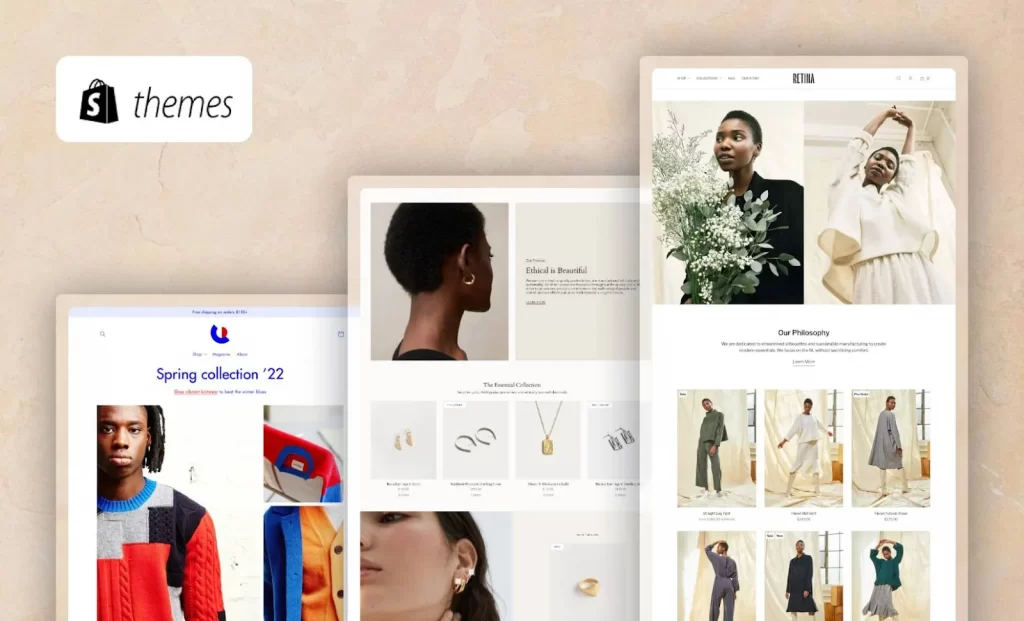
You can also combine selling on Shopify with popular marketplaces. Nowadays, there are many tools available to support multichannel selling, allowing you to easily manage all your platforms from one central hub. Best of all, you can start with $0 in upfront costs.
LitCommerce is a powerful tool that streamlines your product listings, inventory, and sales across multiple channels, so you can focus on growing your brand without the hassle of managing separate systems. Pro tip: Beyond these platforms, consider custom mobile software development to give customers a seamless shopping experience and strengthen your brand presence.
Sell Your Clothing Brand on 20+ Online Channels with Ease
Easily list your products on popular eCommerce platforms like Shopify, WooCommerce, and top marketplaces like Amazon, Etsy, and eBay with LitCommerce. Manage everything seamlessly from your eCommerce platform dashboard.
Step 12: Launch with a focused marketing plan
A great product and a beautiful store won’t matter if no one knows about it. Launching your brand requires a well-thought-out marketing plan, the final step in learning how to start a clothing brand, that will create excitement, drive traffic, and convert visitors into paying customers.
Start with your social media strategy
Social media is one of the most powerful marketing tools at your disposal, especially for clothing brands. It’s where your audience hangs out, where trends are born, and where people are discovering new brands every day.
Start with one or two platforms that resonate with your target audience. Instagram, TikTok, and Pinterest are great for fashion brands due to their visual nature, but make sure you pick platforms where your potential customers are most active.
Run paid ads (even on a small budget)
Paid ads are a quick way to drive traffic to your store, but you don’t need to break the bank. Start small and experiment with ads on platforms like Instagram, Facebook, or Google. Here’s how to approach it:
- Test with low-budget ads: Start with a daily budget of $5-$10 and test different ads. Run simple promotions, like a discount or free shipping, to attract first-time buyers.
- Target your ideal customer: Use precise targeting options to reach the right audience based on demographics, interests, and behaviors.
Leverage KOLs, KOCs, and influencers to amplify your brand
Influencer marketing is one of the most effective ways to boost your brand’s visibility, and it’s evolving with new strategies. Beyond traditional influencers, key opinion leaders (KOLs) and key opinion consumers (KOCs) are becoming increasingly important, especially for new and growing brands.
Recent stats show that 60% of consumers are more likely to purchase a product recommended by a KOL, and 79% of people trust user-generated content (UGC) as much as personal recommendations. That’s why building a strategy around influencers and KOCs is essential, especially if you’re working with a limited budget.
You can start by reaching out to micro-influencers or local creators who resonate with your target audience. Offer to send them free samples or work out a small collaboration deal. Their authentic promotion can help get your brand in front of the right people.
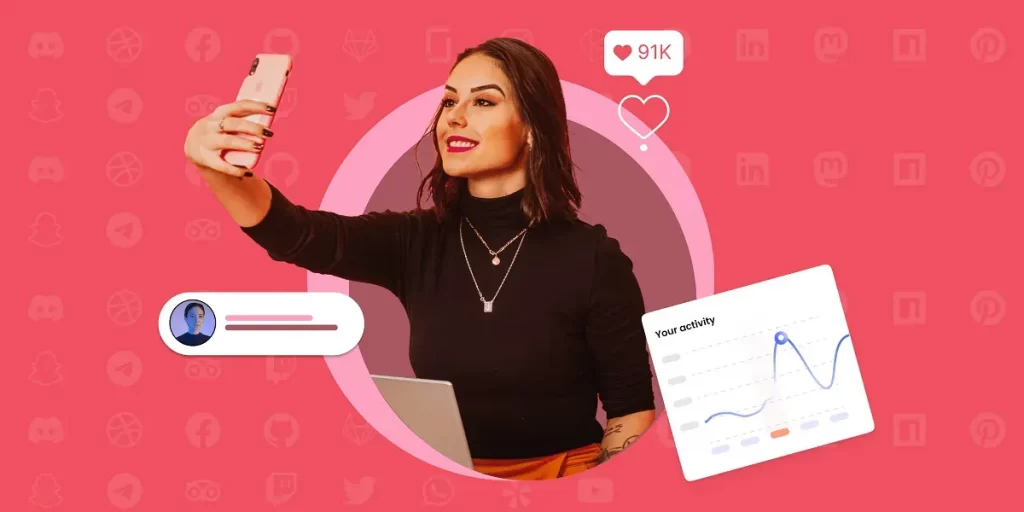
Promote Your Brand on 300+ Channels with Our Advanced FREE Tool
With LitCommerce product feed management tool, you can automate and optimize your listings to ensure they are always accurate, visible, and ready to convert customers for FREE!
How Much Does It Cost to Start a Clothing Brand
The cost to start a clothing brand depends on what you’re making and how you’re making it.
For example, making t-shirts at home with a heat press will be much cheaper than outsourcing to a manufacturer for custom cut-and-sew pieces.
Here’s a rough estimate of what you might need to start a clothing brand:
- Basic production (small batch, DIY approach): $500 – $2,000
- Outsourced production (custom designs, small batch): $5,000+ for a line of 5 unique items with hundreds of units produced per design.
- Website setup: $29 – $79/month. Shopify, Big Cartel, or other platforms, plus additional costs for a domain and web design (if needed).
- Packaging and shipping materials: $100 – $500+, depending on the type and quantity of packaging you order.
- Marketing and advertising: $100 – $500/month (starting), to get your brand visible to potential customers.
Starting small with a low-cost strategy is key, but as you grow, you’ll need to reinvest in production, marketing, and scaling. Careful planning is crucial to keep costs in check and ensure long-term success.
Expert Tips for How to Start a Clothing Line
Learning how to start a clothing brand can be both exciting and challenging, but with the right approach, you can turn your vision into reality. Here are some expert tips to guide you on your journey:
- Start small, test, and scale: Start small with a few key pieces that reflect your brand’s identity. This allows you to test the market and gather feedback before committing to larger orders. Once you know what works, you can scale up gradually.
- Focus on quality, not just quantity: The quality of your products will determine your brand’s reputation. Even if you’re starting with a low-budget strategy, invest in good fabrics and craftsmanship. Over time, quality will set you apart from competitors and build customer loyalty.
- Keep your costs in check: When starting out, it’s easy to get carried away with fancy packaging or unnecessary features. Be mindful of your budget and focus on what’s most important. Keep a spreadsheet of your expenses and track where your money is going to avoid overspending.
- Stay consistent: Consistency in design, messaging, and marketing is key. Whether it’s your website, social media posts, or product packaging, make sure everything aligns with your brand’s aesthetic. This creates a cohesive experience that builds trust and encourages repeat business.
- Build relationships with suppliers: Good relationships with your suppliers and manufacturers can make all the difference in the quality of your product and your ability to scale. Keep communication open, be clear about expectations, and be ready to collaborate to solve any challenges that arise.

Successful Clothing Brands You Should Learn From
As you learn how to start a clothing brand, looking to successful brands for inspiration can offer valuable insights into what works and what doesn’t.
Here are three brands that have made a mark in the fashion world and can teach you some key lessons:
Everlane is a perfect example of how transparency can be a game-changer in the fashion industry. The brand built its reputation on radical transparency, sharing the costs of production and revealing the true price breakdown of each item, from materials to labor. This honesty has helped Everlane connect with a highly conscious customer base that values ethical sourcing and sustainability.
Takeaway: Be transparent about your processes and pricing. Customers appreciate honesty, especially when it comes to the environment and labor practices.
Patagonia is known for its commitment to environmental sustainability and ethical practices, Patagonia has built a loyal following by aligning its brand with a purpose. The brand’s environmental campaigns, like its “Don’t Buy This Jacket” ad, focus on the message of conscious consumerism and promoting the idea of buying less but investing in quality.
Takeaway: Define a clear purpose for your brand. Whether it’s sustainability, social impact, or something else, having a mission that resonates with customers can set you apart and build long-term loyalty.
Gymshark is a fitness apparel brand that has grown rapidly by leveraging social media marketing and influencer partnerships. Initially starting with humble beginnings in a garage, Gymshark used YouTube and Instagram to create a community of fitness enthusiasts who loved the brand’s designs and mission. They worked closely with fitness influencers and athletes to amplify their reach, ensuring their audience felt personally connected to the brand.
Takeaway: Building a community around your brand can significantly enhance customer loyalty. Focus on social media engagement, collaborate with micro-influencers or athletes in your niche, and use content to keep the conversation going.
How to Start a Clothing Brand – FAQs
How much does it cost to start a clothing brand?
The amount of money you need to start a clothing brand varies based on the scale of your business. If you’re starting small with DIY production (like printing t-shirts at home), you might get started with as little as $500-$2,000. However, if you’re outsourcing to manufacturers or creating custom pieces, initial costs can range from $5,000 to $10,000+. Key expenses include materials, production, website setup, marketing, and packaging.
Do I need to be a designer to start a clothing brand?
No, you don’t have to be a designer to learn how to start a clothing business. Many successful brands are created by entrepreneurs who focus on the business and marketing side. You can hire freelance designers or work with manufacturers who offer custom design services. What’s important is that you have a clear vision and brand identity for your clothing line.
How do I market my clothing brand without a big budget?
Marketing your clothing brand on a tight budget is possible with the right strategies. Social media is your best friend for free marketing. Platforms like Instagram, TikTok, and Pinterest are perfect for showcasing your designs, telling your brand story, and engaging with your audience. You can also work with micro-influencers or KOCs who have a smaller but highly engaged following, often in exchange for free products.
Final Thoughts
Learning how to start a clothing brand is an exciting and rewarding venture, but it requires careful planning, dedication, and a clear understanding of your market and customers. From finding your niche to building a strong brand identity and leveraging social media, each step is an opportunity to showcase your creativity and connect with your audience.
While it can feel overwhelming at times, remember that every successful brand started with a vision and a willingness to learn and adapt. Focus on quality, consistency, and authenticity, and use every setback as a learning experience.
And if you want to learn more about business tips and strategies, check out our blog.
Good luck!





